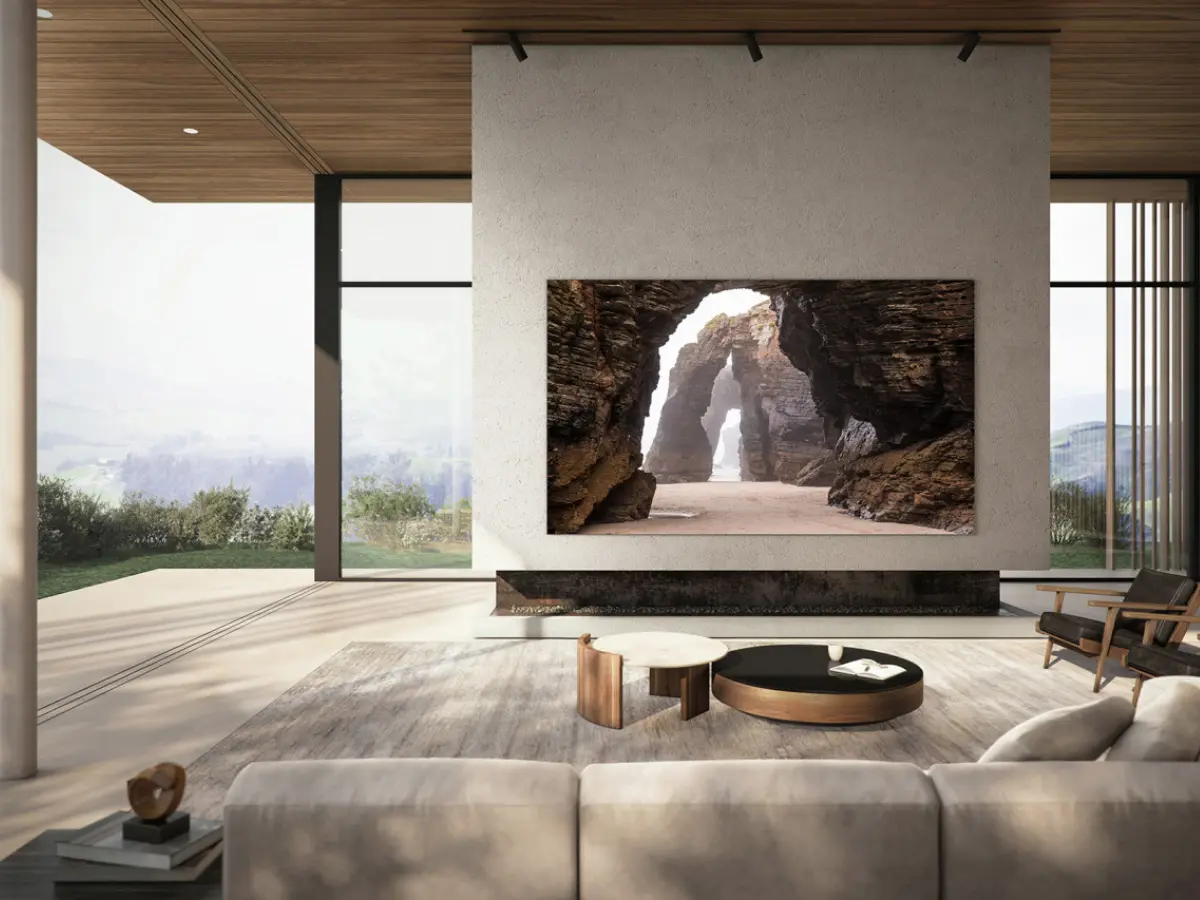Samsung has unveiled a 110-inch MicroLED TV that is a jaw-dropping beast: Samsung has shown a gigantic 110-inch MicroLED TV that it claims will go on sale in 2021, setting off what is expected to be a long and interesting series of announcements surrounding CES 2021. This coincides with the anticipated release of the new Samsung QLED NEO TV series at CES 2021.
If MicroLED TV technology sounds at all familiar, it’s likely because Samsung has been showcasing its “The Wall” screens on the CES stage for the past two years. This new 110-inch display, on the other hand, is a single-piece, high-quality television that is prepared to be used straight out of the box, unlike those modular monsters. In other words, Samsung is creating this enormous, next-generation TV just for your living room, while The Wall was created with commercial use in mind. Or, you know, someone’s living room.
-
Lava President Takes A Shot at the Nothing Phone 2a Due To Its Storage & RAM – Maza Nahi Aaya
-
Asus VivoWatch 6 Launch Date in India: This Asus smartwatch spotted on Bluetooth SIG
For those who are not familiar, MicroLED is a type of self-emissive display technology that is related to OLED technology in certain aspects. The LEDs in modern common LED/LCD TVs serve as backlights, illuminating an LCD. MicroLEDs have substantially smaller LEDs—micrometers, to be accurate. More significantly, no color filter or additional layers are required because the MicroLEDs themselves generate the red, green, and blue colors required to create an image.
The capacity to get pure blacks is the first benefit of having a self-emissive display in terms of picture quality; when the MicroLEDs are switched off, they are entirely off, which is comparable to the benefits of OLED displays in terms of pure blacks.
But that is the extent of the OLED analogies. In addition to being far brighter than OLED displays, microLED displays also provide a greater color gamut, better color accuracy, and—perhaps most importantly—are not as prone to burn-in as OLED displays.

In light of this, a 110-inch display such as this one would be significantly more advantageous than a projector and projection screen combination, providing the 110-inch size’s unmatched brightness, black levels, and HDR highlights. Imagine cutting-edge home theatre.
Here are the features of the 110-inch MicroLED that we currently know about: The TV has an edge-to-edge display with no bezel, supports HDR10 and HDR10+ formats (but not Dolby Vision), and has Samsung’s Object Tracking Sound Pro technology, which simulates noises coming from objects and people on the screen. It also offers 4K HDR picture quality. The television will feature an over-the-air TV tuner, and while this has not been verified, it is most likely that the tuner will support ATSC 3.0, or Next-Gen TV.
Additionally, owners of the TV will be able to display four sources simultaneously across four 55-inch panels. This will be a game-changer for anyone who wants to follow numerous sports programs, keep track of news, or watch multiple programs at once.
Regarding Samsung’s 110-inch MicrLED TV, there are still several important aspects that are unknown. We have to settle for a 110-inch MicroLED for the time being because we don’t have a catchy name or model number. Additionally, we are unsure of the TV’s thickness, but it will undoubtedly be thicker than most of the traditional LED TVs we buy now and thicker than OLED TVs.
Moreover, Samsung has not yet stated if this TV would have its OneConnect box, which enables all parts to connect to a single box and uses an almost invisible connection to route the TV signal up to the display. This information was obtained at the time of writing. Additionally, Samsung has not yet confirmed if this next-generation TV will support auto low latency mode, variable refresh rate, 4K resolution at 120Hz, or HDMI 2.1—all of which are capabilities that are much sought after by gamers.
I’m also interested in finding out how much energy this TV will need. It is probable that this TV will not have an Energy Star sticker and may produce a considerable amount of heat, based on my past experiences with Samsung’s The Wall TVs.
Come to CES 2021, when all of the TV manufacturers are hoping to get a piece of the excitement around the show, those details ought to be made public. We’re in for a crazy year in TV for 2021 if Samsung’s early offering and preorders are any clue.
___Read Also:
-
60000 mAh Power Bank: This powerbank is a mini power station!
-
Wear OS Hybrid brings 100 days battery life to OnePlus Watch 2